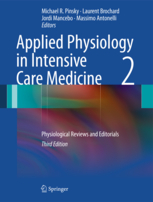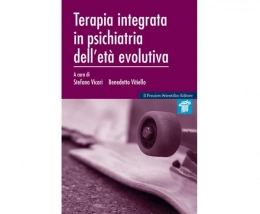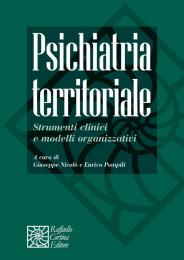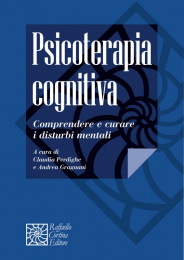Non ci sono recensioni
- Up-to-date compendium of practical bedside knowledge essential to the effective delivery of acute care medicine
- Ideal reference source on key issues regularly confronted by clinicians
- Comprises concise physiological and technical notes, more detailed reviews, and a series of seminal studies
- Written by renowned experts in the field
The two previous editions of Applied Physiology in Intensive Care Medicine proved extremely successful, and the book has now been revised and split into two volumes to enhance ease of use. In this second volume some of the most renowned experts in the field offer detailed reviews on measurement techniques and physiological processes of crucial importance in intensive care medicine. Throughout, a key aim is to help overcome the fundamental unevenness in clinicians’ understanding of applied physiology, which can lead to suboptimal treatment decisions.
Applied Physiology in Intensive Care has been written by some of the most renowned experts in the field and provides an up-to-date compendium of practical bedside knowledge essential to the effective delivery of acute care medicine. It will serve the clinician as an invaluable reference source on key issues regularly confronted in everyday practice.
Contents
1. Physiological Reviews
1.1 Measurement Techniques
Fluid responsiveness in mechanically ventilated
patients: a review of indices used in intensive
care . . . . . . . . . . . . . . . . . . . . . . . . . . . . . . . . . . . . . . . . . . . 3
KARIM BENDJELID, JACQUES-A. ROMAND
Different techniques to measure intra-abdominal
pressure (IAP): time for a critical re-appraisal. . . . . . . . 13
MANU L. N. G. MALBRAIN
Tissue capnometry: does the answer
lie under the tongue? . . . . . . . . . . . . . . . . . . . . . . . . . . . 29
ALEXANDRE TOLEDO MACIEL, JACQUES CRETEUR,
JEAN-LOUIS VINCENT
N oninvasive monitoring of peripheral
perfusion . . . . . . . . . . . . . . . . . . . . . . . . . . . . . . . . . . . . . 39
ALEXANDRE LIMA, JAN BAKKER
Ultrasonographic examination of the venae
cavae . . . . . . . . . . . . . . . . . . . . . . . . . . . . . . . . . . . . . . . . . 51
FRAN˙ OIS JARDIN, ANTOINE VIEILLARD-BARON
Passive leg raising . . . . . . . . . . . . . . . . . . . . . . . . . . . . . 55
XAVIER MONNET, JEAN-LOUIS TEBOUL
1.2 Physiological Processes
Sleep in the intensive care unit . . . . . . . . . . . . . . . . . . . 61
SAIRAM PARTHASARATHY, MARTIN J. TOBIN
Magnesium in critical illness: metabolism,
assessment, and treatment . . . . . . . . . . . . . . . . . . . . . . 71
J. LUIS NORONHA, GEORGE M. MATUSCHAK
Pulmonary endothelium in acute lung injury:
from basic science to the critically ill . . . . . . . . . . . . . . . 85
S. E. ORFANOS, I. MAVROMMATI, I. KOROVESI,
C. ROUSSOS
Pulmonary and cardiac sequelae of subarachnoid
haemorrhage: time for active management? . . . . . . . . 99
C. S. A. MACMILLAN, I. S. GRANT, P. J. D. ANDREWS
Permissive hypercapnia role in protective lung
ventilatory strategies . . . . . . . . . . . . . . . . . . . . . . . . . . 111
JOHN G. LAFFEY, DONALL O’CROININ,
PAUL MCLOUGHLIN, BRIAN P. KAVANAGH
Right ventricular function and positive pressure
ventilation in clinical practice: from hemodynamic
subsets to respirator settings . . . . . . . . . . . . . . . . . . . 121
FRAN˙ OIS JARDIN, ANTOINE VIEILLARD-BARON
Acute right ventricular failure from
pathophysiology to new treatments . . . . . . . . . . . . . . 131
ALEXANDRE MEBAZAA, PETER KARPATI,
ESTELLE RENAUD, LARS ALGOTSSON
Red blood cell rheology in sepsis . . . . . . . . . . . . . . . . 143
M. PIAGNERELLI, K. ZOUAOUI BOUDJELTIA,
M. VANHAEVERBEEK, J.-L. VINCENT
Stress-hyperglycemia, insulin and
immunomodulation in sepsis . . . . . . . . . . . . . . . . . . . 153
PAUL E. MARIK, MURUGAN RAGHAVAN
H ypothalamic-pituitary dysfunction in
critically ill patients with traumatic and
nontraumatic brain injury . . . . . . . . . . . . . . . . . . . . . . 163
IOANNA DIMOPOULOU, STYLIANOS TSAGARAKIS
Matching total body oxygen consumption
and delivery: a crucial objective? . . . . . . . . . . . . . . . . . 173
PIERRE SQUARA
N ormalizing physiological variables in acute
illness: five reasons for caution . . . . . . . . . . . . . . . . . . 183
BRIAN P. KAVANAGH, L. JOANNE MEYER
Interpretation of the echocardiographic pressure
gradient across a pulmonary artery band
in the setting of a univentricular heart . . . . . . . . . . . . 191
SHANE M. TIBBY, ANDREW DURWARD
Viii Contents
Ventilator-induced diaphragm dysfunction:
the clinical relevance of animal models . . . . . . . . . . . 197
TheoDoRos VassiLakoPoULos
Understanding organ dysfunction in
hemophagocytic lymphohistiocytosis . . . . . . . . . . . . 207
caRoLine cRÉ PUT, LioneL GaLicieR,
soPhie BUyse, eLie aZoULay
What is normal intra-abdominal pressure
and how is it affected by positioning, body mass
and positive end-expiratory pressure? . . . . . . . . . . . . 219
B. L. De keULenaeR, J. J. De WaeLe, B. PoWeLL,
M. L. n. G. MaLBRain
Determinants of regional ventilation and blood
flow in the lung . . . . . . . . . . . . . . . . . . . . . . . . . . . . . . . 227
RoBB W. GLenny
The endothelium: physiological functions and role
in microcirculatory failure during
severe sepsis . . . . . . . . . . . . . . . . . . . . . . . . . . . . . . . 237
h. aiT-oUFeLLa, e. MaURy, s. LehoUX,
B. GUiDeT, G. oFFensTaDT
Vascular hyporesponsiveness to vasopressors
in septic shock: from bench to bedside . . . . . . . . . . . . 251
B. LeVy, s. coLLin, n. sennoUn, n. DUcRocQ,
a. kiMMoUn, P. asFaR, P. PeReZ, F. MeZiani
Monitoring the microcirculation in the critically
ill patient: current methods and future
approaches . . . . . . . . . . . . . . . . . . . . . . . . . . . . . . . . . . 263
DanieL De BackeR, GUsTaVo osPina-Tascon,
DiaManTino saLGaDo, RaPhaË L FaVoRy,
JacQUes cReTeUR, Jean-LoUis VincenT
The role of vasoactive agents in the resuscitation
of microvascular perfusion and tissue
oxygenation in critically ill patients . . . . . . . . . . . . . . 277
e. chRisTiaan BoeRMa, can ince
Interpretation of blood pressure signal:
physiological bases, clinical relevance,
and objectives during shock states . . . . . . . . . . . . . . . 293
J.-F. aUGUsTo, J.-L. TeBoUL, P. RaDeRMacheR,
P. asFaR
Deadspace ventilation: a waste of breath! . . . . . . . . . 303
PRaTik sinha, oLiVeR FLoWeR, neiL soni
2. Editorials
The role of the right ventricle in determining
cardiac output in the critically ill . . . . . . . . . . . . . . . . . 317
M. . Pinsky
Beyond global oxygen supply-demand relations:
in search of measures of dysoxia . . . . . . . . . . . . . . . . . 319
M. . Pinsky
Breathing as exercise: The cardiovascular
response to weaning from mechanical
ventilation . . . . . . . . . . . . . . . . . . . . . . . . . . . . . . . . . . 323
MichaeL R. Pinsky
Variability of splanchnic blood flow measurements
in patients with sepsis – physiology,
pathophysiology or measurement errors? . . . . . . . . . 327
s. M. Ja oB, J. TakaLa
Functional hemodynamic monitoring . . . . . . . . . . . . 331
MichaeL R. Pinsky
N on-invasive ventilation in acute exacerbations
of chronic obstructive pulmonary disease:
a new gold standard? . . . . . . . . . . . . . . . . . . . . . . . . . . 335
M.W. eLLioTT
The adrenergic coin: perfusion
and metabolism . . . . . . . . . . . . . . . . . . . . . . . . . . . . . . 339
kaRL TRÄ GeR, PeTeR RaDeRMacheR,
XaVieR LeVeRVe
Death by parenteral nutrition . . . . . . . . . . . . . . . . . . . 343
PaUL e. MaRik, MichaeL R. Pinsky
Ventilator-induced lung injury, cytokines,
PEEP, and mortality: implications for practice
and for clinical trials . . . . . . . . . . . . . . . . . . . . . . . . . . . 347
aRThUR s. sLUTsky, yUMiko iMai
H elium in the treatment of respiratory failure:
why not a standard? . . . . . . . . . . . . . . . . . . . . . . . . . . . 351
enRico caLZia, PeTeR RaDeRMacheR
Is parenteral nutrition guilty? . . . . . . . . . . . . . . . . . . . 355
MaRek PeRTkieWicZ, eRich RoTh, Jan WeRneRMan,
cLaUDe PichaRD, Jean-chaRLes PReiseR
k
.
PETER VARGA, RICHARD GRIFFITHS, RENÉ CHIOLERO,
GÉ RARD NITENBERG, XAVIER LEVERVE,
R
R
Contents iX
Using ventilation-induced aortic pressure and
flow variation to diagnose preload
responsiveness . . . . . . . . . . . . . . . . . . . . . . . . . . . . . . . 359
MichaeL R. Pinsky
Evaluation of left ventricular performance:
an insolvable problem in human beings?
The Graal quest . . . . . . . . . . . . . . . . . . . . . . . . . . . . . . . 363
aLain niTenBeRG
Evaluation of fluid responsiveness in ventilated
septic patients: back to venous return . . . . . . . . . . . . 367
PhiLiPPe ViGnon
Mask ventilation and cardiogenic pulmonary
edema: “another brick in the wall” . . . . . . . . . . . . . . . 371
sanGeeTa MehTa, sTeFano naVa
Does high tidal volume generate ALI/ARDS
in healthy lungs? . . . . . . . . . . . . . . . . . . . . . . . . . . . . . . 375
chiaRa BoneTTo, PieRPaoLo TeRRaGni,
V. MaRco RanieRi
Weaning failure from cardiovascular origin . . . . . . . . 379
chRisTian RichaRD, Jean-LoUis TeBoUL
The hidden pulmonary dysfunction in acute
lung injury . . . . . . . . . . . . . . . . . . . . . . . . . . . . . . . . . . . 383
GÖ Ran heDensTieRna
The “open lung” compromise . . . . . . . . . . . . . . . . . . . 389
John J. MaRini
Acute respiratory failure: back to the roots! . . . . . . . . 393
chRisTian MUeLLeR
Is right ventricular function the one that matters
in ARDS patients? Definitely yes . . . . . . . . . . . . . . . . . 397
anToine VieiLLaRD-BaRon
Strong ion gap and outcome after cardiac arrest:
another nail in the coffin of traditional
acid–base quantification . . . . . . . . . . . . . . . . . . . . . . . 401
PaTRick M. honoRe, oLiVieR Joannes-BoyaU,
WiLLeM BoeR
Prone positioning for ARDS: defining
the target . . . . . . . . . . . . . . . . . . . . . . . . . . . . . . . . . . . . 405
John J. MaRini
Can one predict fluid responsiveness
in spontaneously breathing patients? . . . . . . . . . . . . 385
DanieL De BackeR, MichaeL R. Pinsky
. . . . . . . . . . . . . . . . Index . . . . . . . . . . . . . . . . . . . . . . . 409




